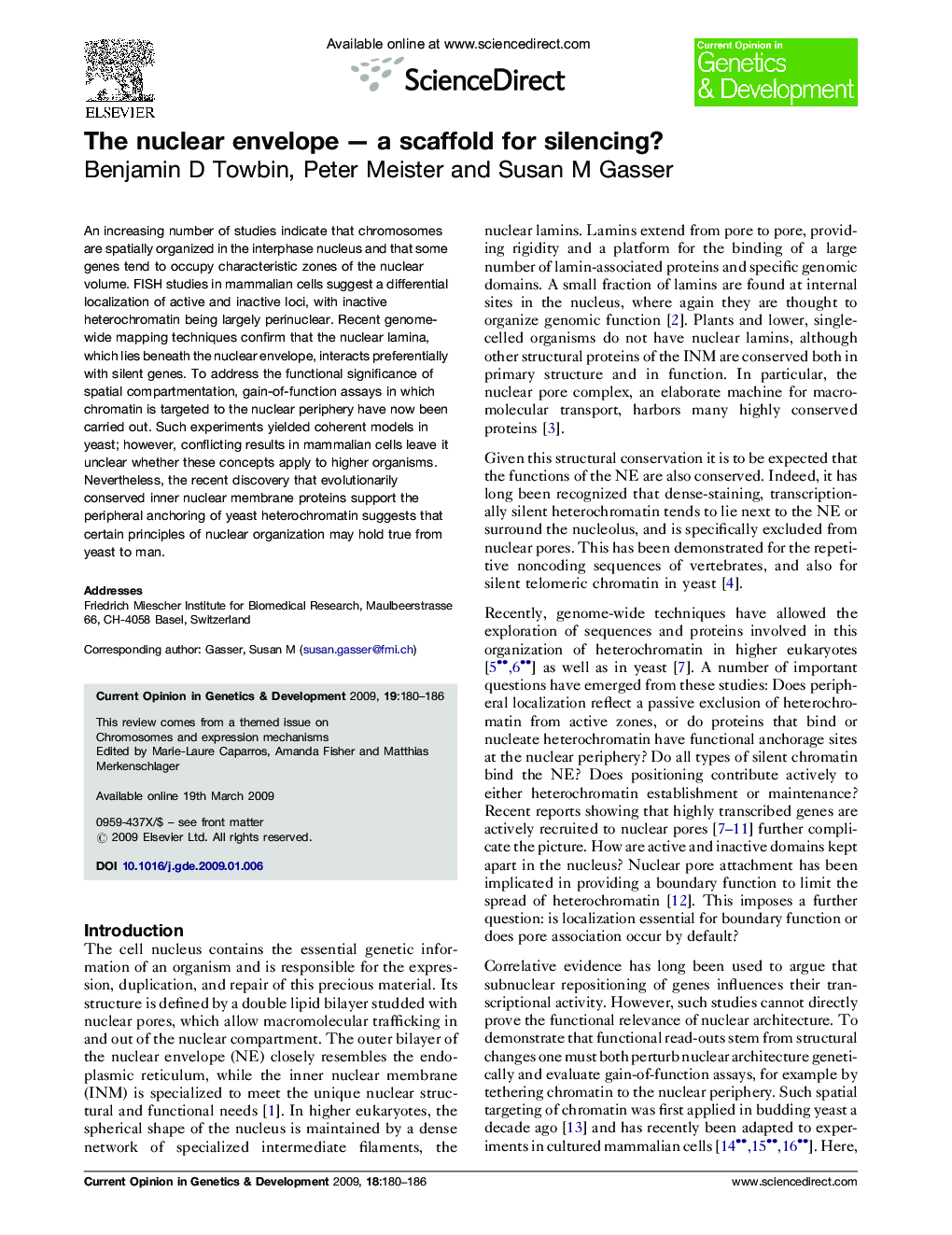| Article ID | Journal | Published Year | Pages | File Type |
|---|---|---|---|---|
| 2785237 | Current Opinion in Genetics & Development | 2009 | 7 Pages |
An increasing number of studies indicate that chromosomes are spatially organized in the interphase nucleus and that some genes tend to occupy characteristic zones of the nuclear volume. FISH studies in mammalian cells suggest a differential localization of active and inactive loci, with inactive heterochromatin being largely perinuclear. Recent genome-wide mapping techniques confirm that the nuclear lamina, which lies beneath the nuclear envelope, interacts preferentially with silent genes. To address the functional significance of spatial compartmentation, gain-of-function assays in which chromatin is targeted to the nuclear periphery have now been carried out. Such experiments yielded coherent models in yeast; however, conflicting results in mammalian cells leave it unclear whether these concepts apply to higher organisms. Nevertheless, the recent discovery that evolutionarily conserved inner nuclear membrane proteins support the peripheral anchoring of yeast heterochromatin suggests that certain principles of nuclear organization may hold true from yeast to man.
